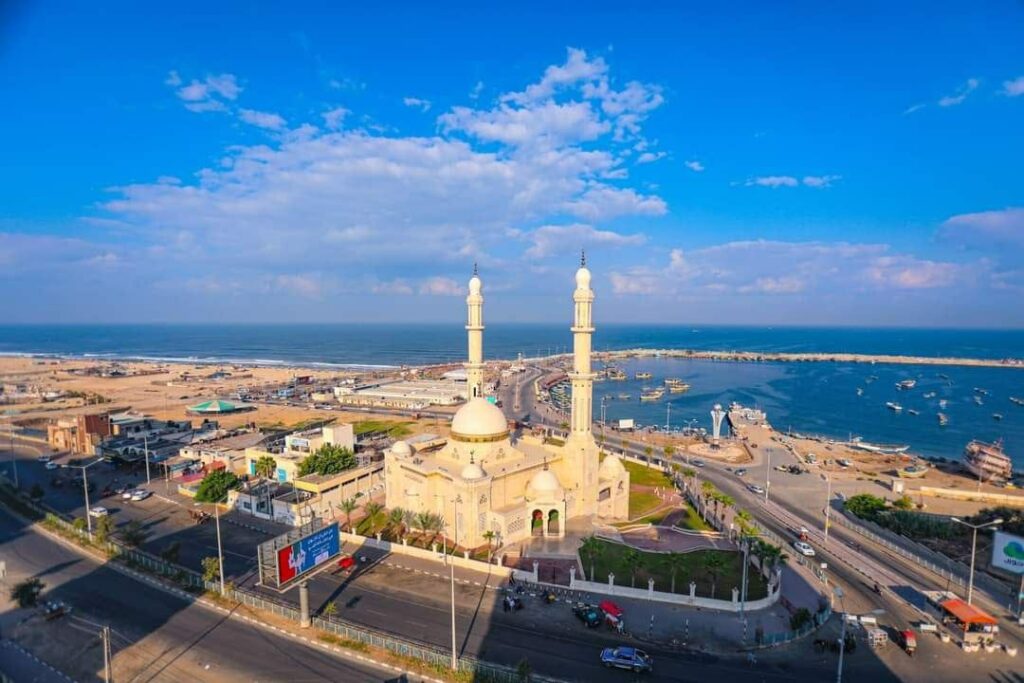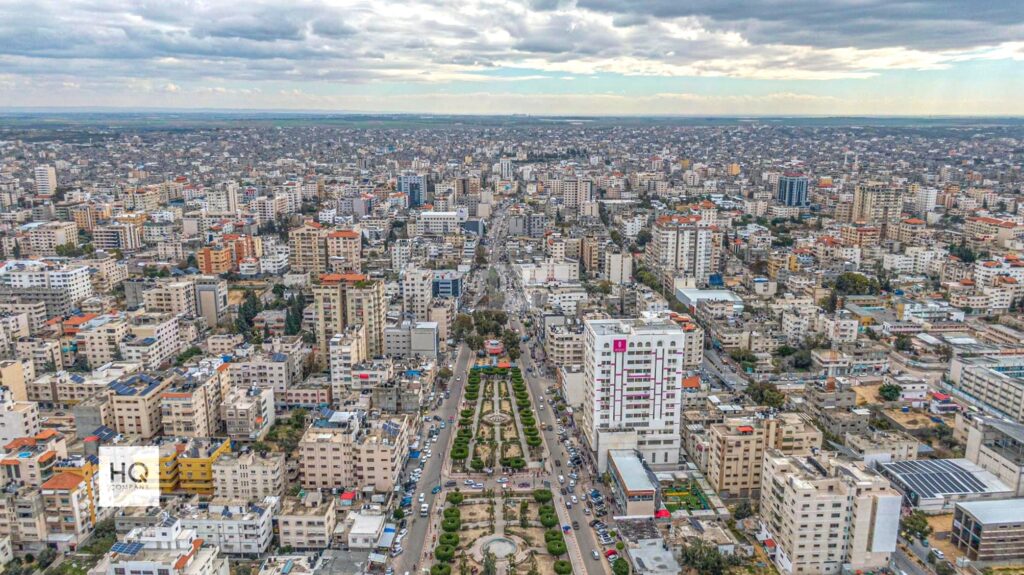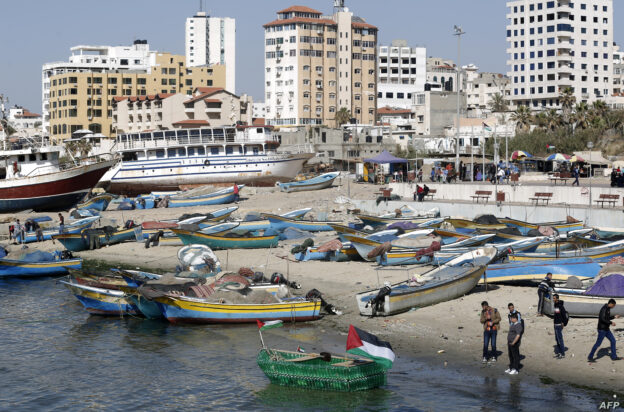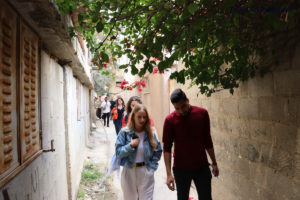Gaza City, situated on the Mediterranean coast and bordered by Egypt to the south, boasts a rich historical legacy dating back millennia. Initially established as a pivotal trade hub along the coastal route between Egypt and Syria, ancient Gaza flourished as a bustling center of commerce and culture.
Ancient Roots
In antiquity, Gaza emerged as a prominent Philistine city during the early Iron Age, revered for its association with the Canaanite deity Dagon. The city features prominently in biblical narratives, notably as the purported site of Samson’s legendary feat of toppling the Philistine temple.
Conquest and Evolution
Throughout history, Gaza witnessed successive waves of conquest and cultural evolution. From its capture by the Assyrian king Tiglath-Pileser III in 734 BC to its transformation into a Babylonian stronghold in the sixth century BC, Gaza remained a strategic prize coveted by regional powers.


Hellenistic and Roman Era
During the Hellenistic and Roman periods, Gaza experienced a time of prosperity and urban development. Referred to as Kadytis by the ancient Greek historian Herodotus, the city thrived as a cosmopolitan center adorned with temples dedicated to various deities, including Zeus, Aphrodite, and Apollo.
Islamic Rule and Ottoman Dominion
Under Islamic rule in 636 AD, Gaza emerged as a significant religious and cultural center, attracting pilgrims and scholars alike. Subsequent centuries saw Gaza transition through various ruling dynasties, culminating in its incorporation into the Ottoman Empire in 1516.
Modern Era
In the modern era, Gaza underwent colonial rule under the British Mandate from 1918 to 1948, followed by Egyptian administration until 1967 when it fell under Israeli occupation. However, in 1995, control of Gaza was transferred to Palestinian Authority, marking a pivotal moment in its contemporary history.
Present-day Gaza City
Today, Gaza City serves as the economic heart of the region, renowned for its agricultural produce, including citrus fruits, and its vibrant artisanal industries. Visitors to the city can savor its culinary delights, particularly its fresh seafood, at beachfront restaurants while enjoying the soothing Mediterranean ambiance in public parks. Gaza’s cultural heritage, intertwined with its modern aspirations, continues to captivate visitors from around the world.

Gaza’s Unmissable Attractions: A Must-Visit List
Embark on a journey through Gaza’s rich heritage and vibrant culture with our curated list of must-visit attractions. From ancient ruins to bustling markets, explore the essence of Gaza through its unmissable landmarks.
Historic Religious Sites in Gaza City
Gaza City boasts a rich tapestry of religious landmarks, each steeped in centuries of history and tradition.
The Great Mosque (Al-Umari Mosque)
Nestled in downtown Gaza at the terminus of Omar Mukhtar Street, the Great Mosque, also known as Al-Umari Mosque, stands as a testament to the city’s diverse cultural heritage. Originally constructed as a Norman church by the Crusaders in the twelfth century, its striking minaret dominates the skyline. Legend has it that the mosque occupies the sacred grounds of Gaza’s ancient temple dedicated to the deity Marnas, adding to its historical significance.
Sayyed Hashem Mosque
Situated in the Al-Daraj Quarter, Sayyed Hashem Mosque ranks among Gaza’s largest and most magnificent mosques. Beyond its architectural splendor, the mosque holds profound religious significance as the reputed final resting place of Hashem Bin Abdulmanaf, the grandfather of Prophet Muhammad. According to local lore, Hashem met his demise in Gaza during a trading voyage, and his tomb lies beneath the majestic dome of the mosque, drawing pilgrims and worshippers seeking spiritual solace.
Saint Porphyrius Church
Tucked away in Gaza’s ancient city, Saint Porphyrius Church stands as a venerable testament to early Christianity. Dating back to the fourth century AD, this historic church is revered as the final resting place of Saint Porphyrius, who passed away and was interred within its sacred walls in 420 AD. Despite the passage of time, the church continues to serve as a focal point for the Greek Orthodox community, preserving its rich legacy for generations to come.
Napoleon’s Fort
Located in downtown Gaza on Al-Wahda Street, this impressive stone building has its roots in the Mamluk period. Known as Qasr al-Basha, or The Pasha’s Palace, it gained its name when Napoleon, known as the “Pasha” at the time, stayed here briefly in 1799.
Exploring Al-Zaytun Quarter: A Glimpse into Gaza’s Heritage
Nestled within Gaza’s ancient city lies the enchanting Al-Zaytun Quarter, a cherished enclave steeped in history and architectural splendor.
Historic Homes and Religious Diversity
Al-Zaytun Quarter stands as a living testament to Gaza’s rich cultural tapestry, adorned with an array of exquisite old homes distinguished by their intricate carved wooden doorways. Amidst the labyrinthine streets, visitors can discover a harmonious blend of religious diversity, with both a Catholic church and a Protestant church nestled within the quarter’s confines. These sacred edifices bear witness to Gaza’s longstanding tradition of religious tolerance and coexistence.
The Abdulhamid Public Fountain: A Timeless Landmark
At the heart of Al-Daraj Quarter, the Abdulhamid public fountain stands as a timeless symbol of community and heritage. Originally erected in the sixteenth century, this majestic fountain underwent meticulous renovation under the patronage of Ottoman Sultan Abdulhamid in 1893, preserving its architectural grandeur for future generations. Serving as a gathering place for locals and travelers alike, the fountain continues to flow with the spirit of bygone eras, offering a tranquil oasis amidst the bustling streets of Gaza’s oldest quarter.
Anthedon Port
Anthedon, Gaza’s inaugural seaport, appears in Islamic texts alongside Tida, boasting a history from 800 BC to 1100 AD. Situated a kilometer south of Anthedon, the ancient harbor of Maiumas, once thought to be Gaza’s harbor, evolved into a prosperous coastal town during the Roman era, reflecting Gaza’s early trade connections with Greece.
The exact location of ancient Anthedon remains elusive, with various ruins scattered throughout Gaza City neighborhoods, possibly hinting at its former prominence. Local tradition places Anthedon’s site north of Gaza on a hill known as Tida, recognized as Tida or Taida during the Middle Ages.
Presently, remnants of a Roman temple, walls, artisan dwellings, villas, mosaic flooring, and warehouses comprise the archaeological site of Anthedon. Spanning the late Iron Age to the Byzantine era, the excavated area, roughly five acres in size, includes a remarkably preserved 65-meter mud-brick wall encircling the ancient commercial hub, towering 8 meters in height and boasting a formidable 6-meter thickness.
Tell Um Amer
The original settlement at this location, Tell Um Amer, traces back to the Roman period, situated in Wadi Gaza near the coast. Identified as Tabatha on the Madaba map, it thrived from the Byzantine to the early Islamic era (400 to 670 AD). Notably, it was the birthplace of Saint Hilarion, a key figure in the establishment of monasticism in Palestine, who founded a monastery in the third century, contributing significantly to the region’s religious landscape until its destruction in 614 AD.
The site encompasses the remnants of Saint Hilarion’s monastery, attributed to his birth in 291 AD. It comprises two churches, a burial ground, a baptismal hall, a communal cemetery, an assembly area, and multiple dining quarters. The monastery’s floors boasted intricate designs crafted from limestone, marble tiles, and vibrant mosaics portraying flora and fauna scenes, alongside a Greek inscription adorned with circular motifs. Moreover, the monastery boasted extensive baths to accommodate pilgrims and traders journeying from Egypt to the Fertile Crescent along the Via Maris route.
Khan Yunis
Situated 25 kilometers south of Gaza City, Khan Yunis serves as a pivotal market hub for the agricultural yields sourced from neighboring villages. A notable landmark within its bounds is a fortress constructed during the thirteenth century, initially serving as a stronghold for soldiers tasked with safeguarding pilgrims en route from Jerusalem to Mecca. The town center buzzes with the vibrant energy of its weekly market, offering a captivating glimpse into traditional livelihoods and commerce.
Rafah
Positioned on the southern edge of Gaza, Rafah stands as a coastal retreat adorned with sprawling sand dunes and swaying date palms. Known as Rafia in ancient times under Greek and Roman rule, this Canaanite settlement boasts remnants of its rich history, including ancient mosques, archaeological sites, and the discovery of a mosaic floor.
Deir al-Balah
Famous for its palm-fringed beaches, Deir al-Balah in southern Gaza has gained attention due to recent archaeological digs unveiling a cemetery dating back to the Late Bronze Age. Among the discoveries are ancient pottery, tombs, bronze vessels, and a mosaic floor, shedding light on the town’s historical significance. Additionally, Deir al-Balah houses a monastery erected by Saint Hilarion, further enriching its cultural heritage.
Wadi Gaza
Characterized by its meandering path, Wadi Gaza traverses the Gaza Strip with eight significant bends along its course. Widest at its mouth, the valley spans about 100 meters, while six smaller rivers contribute to its flow, notably Wadi Abu Qatroun to the north and Wadi Ghalbeh to the south.
Situated at the juncture of Africa and Eurasia, the Gaza Strip serves as a vital passage for migratory birds, attracting thousands of species such as ducks, herons, storks, and flamingos, among others, during their seasonal journeys. Notably, the Palestinian sunbird is a prevalent endemic species found year-round in the region.
Efforts to preserve Wadi Gaza’s ecological integrity are increasingly urgent due to the numerous threats it faces. Among the most critical challenges is the valley’s role as a receptacle for sewage from refugee camps and a dumping ground for solid waste, highlighting the need for comprehensive conservation measures.
Conclusion
In conclusion, Gaza City stands as a testament to the enduring legacy of civilizations that have flourished along the Mediterranean coast for millennia. From its origins as a vital trade nexus in antiquity to its modern-day role as an economic hub, Gaza’s evolution reflects the ebb and flow of history and culture.
Throughout its storied past, Gaza has weathered conquests, transitions of power, and waves of cultural exchange, shaping its identity as a resilient and vibrant metropolis. From the bustling markets of Khan Yunis to the tranquil shores of Rafah, each corner of Gaza offers a glimpse into its rich tapestry of heritage and tradition.
As efforts to preserve Gaza’s natural and cultural treasures intensify, there is a growing recognition of the need to safeguard its ecological integrity and historical landmarks. Through responsible stewardship and sustainable development, Gaza’s unique heritage can continue to captivate and inspire generations to come, ensuring its enduring legacy for the future.

